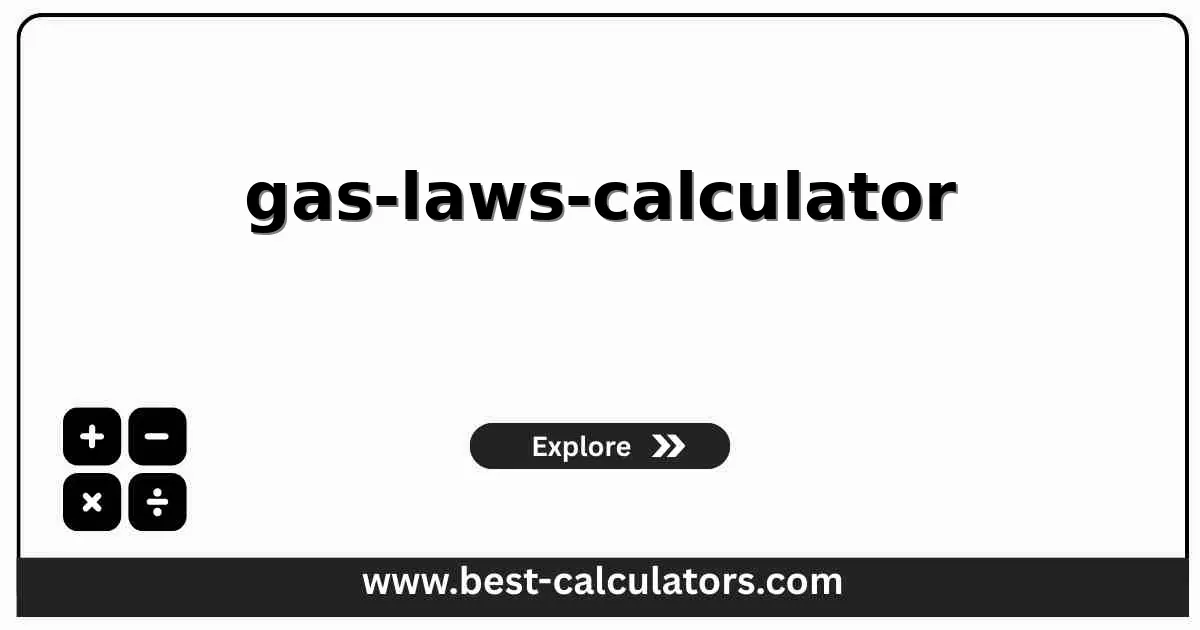Gas Laws Calculator
Calculate gas properties using various gas laws.
Select Law
Result
What are Gas Laws?
Gas Laws are mathematical relationships that describe how pressure, volume, temperature, and amount of gas are related for ideal gases.
These laws help predict gas behavior in chemical reactions, industrial processes, and everyday situations like weather patterns.
To convert moles to mass or vice-versa, use our Mole & Molar Mass Calculator.
Gas Law Formulas
- Ideal Gas Law: PV = nRT
- Boyle's Law: P₁V₁ = P₂V₂
- Charles's Law: V₁/T₁ = V₂/T₂
- Gay-Lussac's Law: P₁/T₁ = P₂/T₂
- Combined: P₁V₁/T₁ = P₂V₂/T₂
Key Concepts
- • Ideal Gas Assumption: No intermolecular forces and particles have no volume. Works best at high temperatures and low pressures.
- • Temperature in Kelvin: Always use absolute temperature (Kelvin) in calculations. Convert °C to K by adding 273.15.
- • STP Conditions: Standard temperature (273.15 K or 0°C) and pressure (1 atm). At STP, 1 mole of ideal gas occupies 22.4 liters.
- • Real-World Applications: Used in scuba diving calculations, weather forecasting, HVAC systems, and chemical engineering processes.
How to Use This Calculator
Select Gas Law
Choose from Ideal, Boyle's, Charles's, etc.
Enter Known Values
Input all known variables.
Calculate Unknown
Get the missing variable instantly.
Benefits of Using This Calculator
- • Multiple Laws: Access all major gas laws in one calculator.
- • Flexible Solving: Calculate any unknown from known values.
- • Educational Tool: Perfect for chemistry and physics students.
Standard Constants
- • R (Ideal Gas Constant): 0.0821 L·atm/(mol·K) or 8.314 J/(mol·K).
- • STP (Standard Temperature and Pressure): 0°C (273.15 K) and 1 atm.

Frequently Asked Questions (FAQ)
Q: What is the Ideal Gas Law?
A: The Ideal Gas Law is the equation of state of a hypothetical ideal gas. It is PV = nRT, where P is pressure, V is volume, n is amount of substance (moles), R is the ideal gas constant, and T is temperature.
Q: What is Boyle's Law?
A: Boyle's Law states that the pressure of a given mass of an ideal gas is inversely proportional to its volume at a constant temperature (P₁V₁ = P₂V₂).
Q: What is Charles's Law?
A: Charles's Law states that the volume of an ideal gas is directly proportional to its absolute temperature at constant pressure (V₁/T₁ = V₂/T₂).